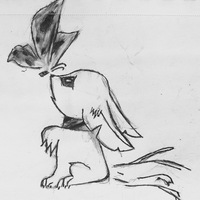
A1=13, a5=18, d=? Геометрическое прогрессия
 0
0
 0
0
Ответы на вопрос
 Внимание! Ответы на вопросы дают живые люди. Они могут содержать ошибочную информацию, заблуждения, а также ответы могут быть сгенерированы нейросетями. Будьте внимательны. Если вы уверены, что ответ неверный, нажмите кнопку "Пожаловаться" под ответом.
Внимание! Ответы на вопросы дают живые люди. Они могут содержать ошибочную информацию, заблуждения, а также ответы могут быть сгенерированы нейросетями. Будьте внимательны. Если вы уверены, что ответ неверный, нажмите кнопку "Пожаловаться" под ответом.

Ответ:
(18-13)/(5-1)=5/4
d=1,25
Пошаговое объяснение:
по формуле нахождения d
(an-a1)/(n-1)
 0
0
 0
0

Based on the given information, it seems like you are referring to an arithmetic progression (AP), not a geometric progression (GP). In an arithmetic progression, the difference between consecutive terms remains constant.
To find the common difference (d) in the arithmetic progression, we can use the formula:
aₙ = a₁ + (n - 1)d
Where: aₙ is the nth term, a₁ is the first term, n is the position of the term in the sequence, d is the common difference.
Using the given information, we have: a₁ = 13 (first term) a₅ = 18 (fifth term) n = 5 (position of the term)
Substituting these values into the formula:
18 = 13 + (5 - 1)d
Simplifying the equation:
18 = 13 + 4d
Subtracting 13 from both sides:
5 = 4d
Dividing both sides by 4:
d = 5/4 = 1.25
Therefore, the common difference (d) in the arithmetic progression is 1.25.
 0
0
 0
0
Похожие вопросы
Топ вопросов за вчера в категории Математика
Последние заданные вопросы в категории Математика
-
Математика
-
Литература
-
Алгебра
-
Русский язык
-
Геометрия
-
Английский язык
-
Химия
-
Физика
-
Биология
-
Другие предметы
-
История
-
Обществознание
-
Окружающий мир
-
География
-
Українська мова
-
Информатика
-
Українська література
-
Қазақ тiлi
-
Экономика
-
Музыка
-
Право
-
Беларуская мова
-
Французский язык
-
Немецкий язык
-
МХК
-
ОБЖ
-
Психология
-
Физкультура и спорт
-
Астрономия
-
Кыргыз тили
-
Оʻzbek tili


























